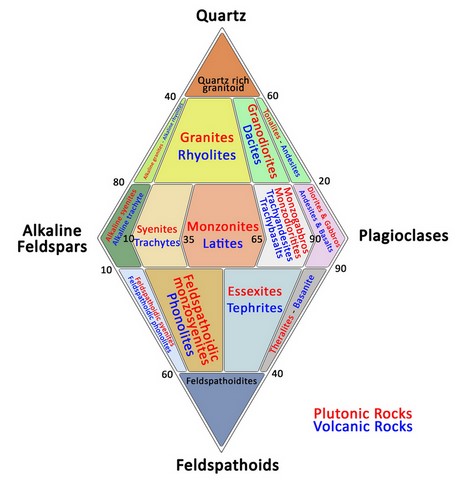What is anorthosite in geology ?
Anorthosite : definition
Anorthosite is a plutonic magmatic rock of whitish to gray hue (hololeucocrates), with a grainy texture, composed of more than 80% of plagioclases similar to those of gabbros (mainly labrador, but also andesine or bytownite) pyroxene (hypersthene augite), hornblende, biotite, sometimes garnet, spinel, corundum and ilmenite.
Anorthosites constitute large massifs in the proterozoic shields of South Africa, Norway and Canada. They represent impressive accumulations of titanium. Some Proterozoic anorthosite bodies contain large amounts of labradorite, which is mined both as a gemstone and as an ornamental material. Archean anorthosites are exploited to extract aluminum. The term anorthosite is sometimes replaced in the literature by plagioclasite.
Anorthosites are of enormous geological interest, as we still don't know how they are formed. Most models involve the separation of plagioclase crystals based on their density. Plagioclase crystals are generally less dense than magma ; thus, when the plagioclase crystallizes in a magma chamber, the plagioclase crystals float upwards, concentrating there.
Lunar anorthosites constitute the light-colored areas of the surface of the Moon and have been the subject of much research.
Anorthosites constitute large massifs in the proterozoic shields of South Africa, Norway and Canada. They represent impressive accumulations of titanium. Some Proterozoic anorthosite bodies contain large amounts of labradorite, which is mined both as a gemstone and as an ornamental material. Archean anorthosites are exploited to extract aluminum. The term anorthosite is sometimes replaced in the literature by plagioclasite.
Anorthosites are of enormous geological interest, as we still don't know how they are formed. Most models involve the separation of plagioclase crystals based on their density. Plagioclase crystals are generally less dense than magma ; thus, when the plagioclase crystallizes in a magma chamber, the plagioclase crystals float upwards, concentrating there.
Lunar anorthosites constitute the light-colored areas of the surface of the Moon and have been the subject of much research.

